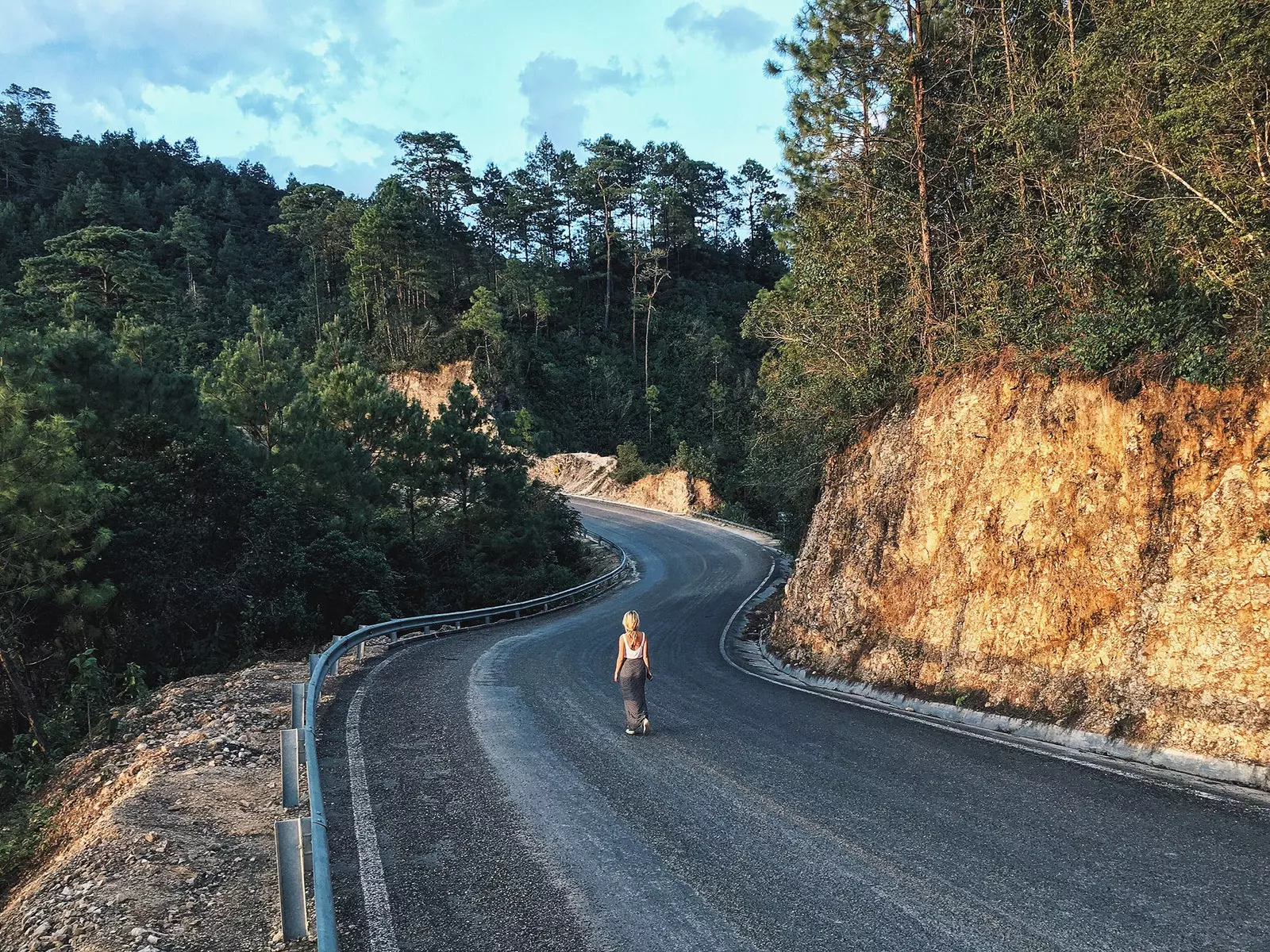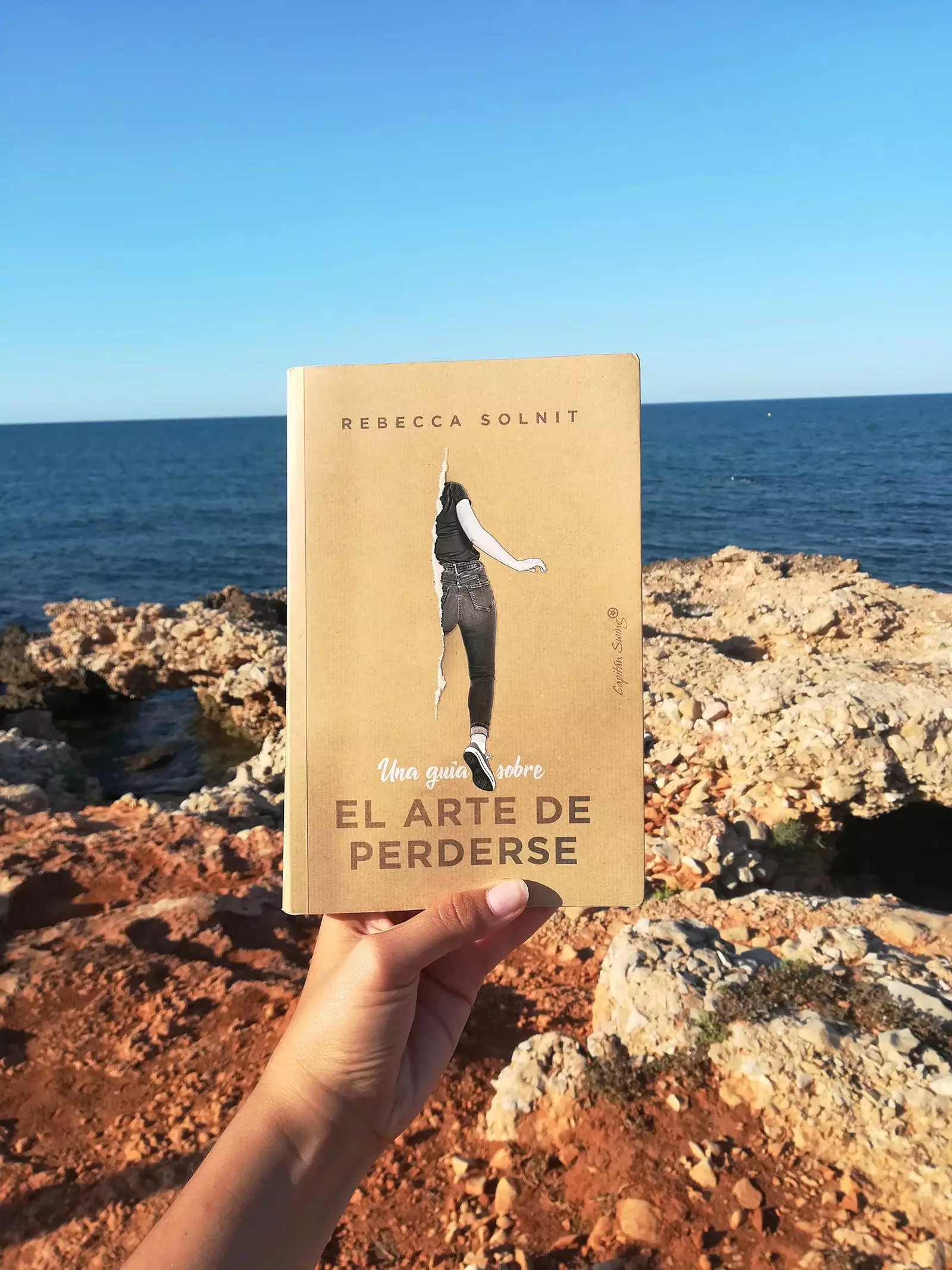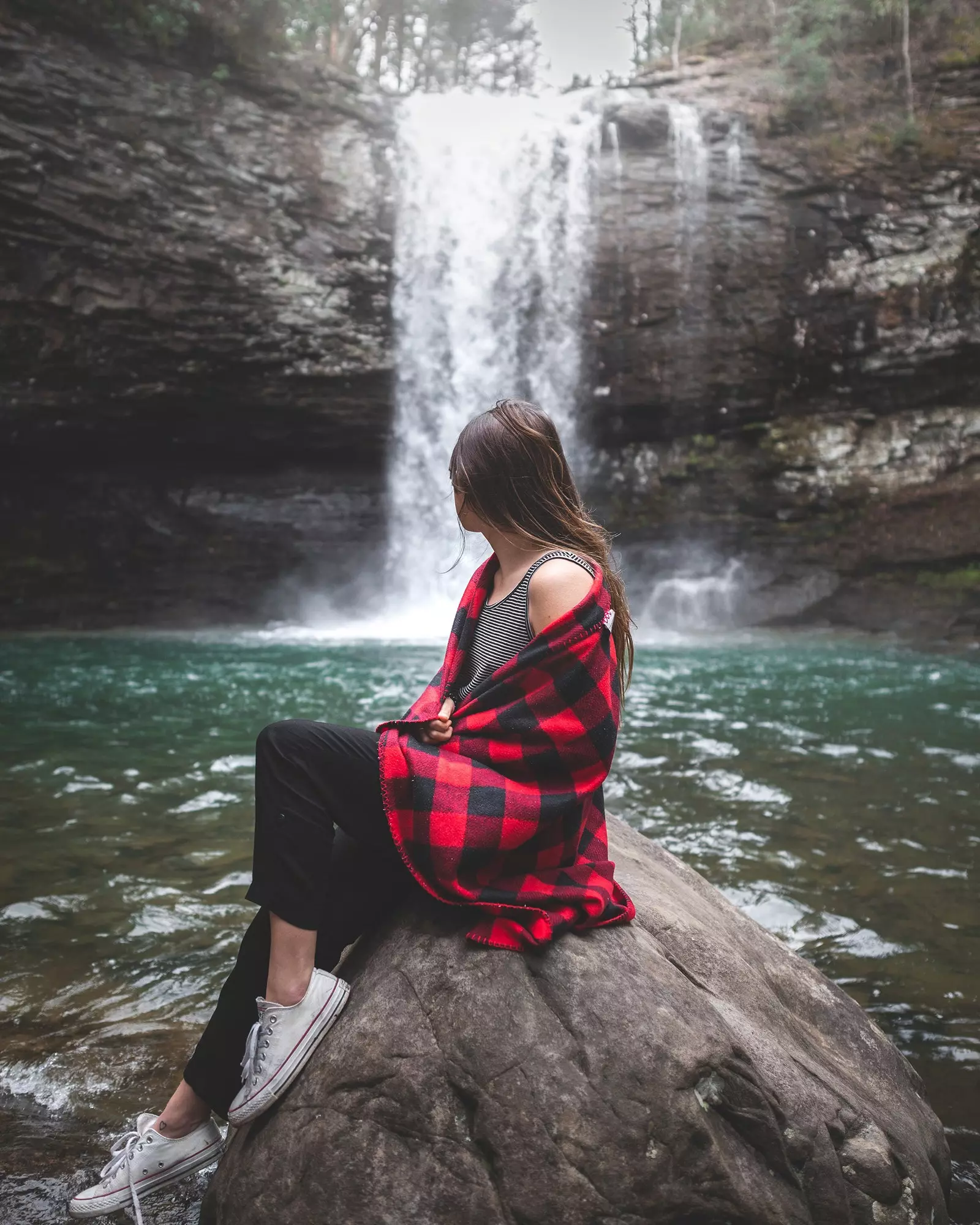
Finding that whose nature you do not know is a matter of getting lost
The Presocratic philosopher Meno once asked "How will you undertake the search for that whose nature you completely do not know?" Many – many – years after Meno asked himself that question, the writer Rebecca Solnit answered: finding that whose nature you do not know is a matter of getting lost. It all starts from this old paradox of Ancient Greece, which serves Solnit as a starting point for explore this not-so-crazy idea of letting go, of embracing the unknown in A Guide to the Art of Getting Lost.
This book, originally published in 2005 and rescued this summer by the publishing house Capitan Swing, is precisely a wandering walk between the thoughts of the author. Through personal experiences, Solnit wanders through those possibilities that loss takes -losing oneself- in all its senses; an amalgamation of autobiographical essays with which she develops ideas that have to do with uncertainty and territories, known or not, physical or not.
It takes us by the hand along the roads of New Mexico, along the trails of the Rockies, along the Great Salt Lake in Utah... It also leads us to common places, to abandoned hospitals, to the strangeness of dreams, to the speculation of the memory. An unknown journey through the roots and the encounter, always through the loss and the doubt that existence offers us.
BUT, GET LOST WHERE, HOW?
"Be lost: a pleasant surrender, as if you were wrapped in arms, enraptured, completely absorbed in what is present in such a way that everything else is blurred".
But is this true, should loss always be a pleasurable surrender? What happens to those people who literally lose their way, who accidentally go off the map? Solnit tells, quite rightly, that "Many of the people who get lost are illiterate in that language, which is the language of the Earth itself, or else they don't stop to read it."
In a digitized world, where big data prevails and where mobiles have GPS, we might ask ourselves if it is possible to get lost; if in a mapped world there is still some corner to discover as those ancient explorers (colonialists) did in the map lines that still appeared as terra incognita. The ultimate question is, are we capable of losing ourselves? How can we do it?

'A Guide to the Art of Getting Lost' by Rebecca Solnit
It really is much simpler than it seems. Henry David Thoreau wrote in Walden, the life of the woods in 1845 that "it is only necessary to turn a man on himself with his eyes closed for him to be disoriented in this world".
Also you just need to realize the number of times we use Google Maps even to go from one place to another in the city we inhabit. In this sense, it is possible to speak of lack of intuition, knowledge and development of the sense of orientation; of the lack of independence and desire to explore to which we seem to have succumbed.
Solnit writes that "Children rarely roam, even in the safest places. Because of their parents' fear of the awful things that might happen… I wonder what they will be consequences of having this generation under house arrest. And she continues: "I love to get out of the way, go beyond what I know and find your way back by going a few extra miles, on a different trail, with a compass that argues with a map, with the contradictory and unrigorous indications of strangers". Perhaps, as Thoreau also said, it is not until we are lost that we begin to understand ourselves.
GET CARRIED AWAY, GET OFF THE MAP
The best thing about the trip, on many occasions, is the thrill of never getting on the road; clumsy wandering around unknown whereabouts with the intention of finding what might surprise us. Without looking for it, but on purpose. Thus, Rebecca Solnit reminds us in A Guide to the Art of Getting Lost that it is not about ending up lost, but about getting lost, something that implies the conscious choice of that state. And doing it consciously also implies being fully present, that is, "one must be able to find yourself submerged in uncertainty and mystery" because, for Solnit, being lost is, above all, a state of mind.
We are talking about an intentional detour on the (tax) road and allow yourself to get lost even in familiar places. That is more difficult, but can be conceived with just an abstraction. she did Virginia Woolf, for example, that she took the streets of london as if they were unknown friends. She left those walks reflected in many of her stories, like the one she wrote in 1930 under the title London walks , where she confesses that she only needed the excuse of going to buy a pencil to "become part of that immense republican army of anonymous vagabonds".

'Walks in London' by Virginia Woolf
Woolf encourages us too: Let's recreate ourselves a little more, let's settle, in spite of everything, with the surfaces: the brilliant shine of the buses; the carnal splendor of butcher shops, with their yellow flanks and purple steaks; the blue and red bouquets of flowers that are boldly displayed behind the florist's window".
The loss proposed by Solnit, like Woolf's, is a bit slow and silent, because the loss, after all, is individual. Through songs, colors, sensations, places, the book traces a route without direction, like when she takes the excuse of going to buy a pencil to wander around the city.
WHAT HAPPENS IF I DO NOT RETURN?
Sometimes it happens that the expectation of getting lost is a destination that never arrives, a place with no way back. It is difficult to imagine how we can find ourselves if in that loss, in that getting lost, there is no return. The question Rebecca Solnit asks in A Guide to the Art of Getting Lost seems necessary in this sense: What if the encounter was to transform?
A clear example is that of some Spanish explorers of the conquest of America, such as Alvaro Nunez Cabeza de Vaca, who wandered from Florida, through Alabama, Mississippi, Louisiana, Texas to California. He himself recounted how he got lost one day looking for fruits similar to carob beans. Cabeza de Vaca took to the life of the natives, to the land without shoes, to the scorching sun; he literally shed his skin as he walked those uncharted paths.
"You have to lose the past to be able to live the present", Solnit assures, and that was what Álvaro Núñez Cabeza de Vaca did, who, upon returning to Spain, "took a while to be able to wear clothes again and sleep somewhere other than the ground." Was he lost? found new? "What he did to stop being lost was not to return, but to transform himself."
Something similar -although a slightly rougher experience- happened centuries later to Eunice Williams that, in 1704, at the age of seven, she was captured by a group of Iroquois Native Americans in Massachusetts. The Iroquois would sometimes kidnap a person to replace someone who had died, the captive received a new name and was treated like a member of the family.
More than thirty years later, Eunice met her brothers and traveled to her old family home, but far from staying there, Following the customs with which the Indians had educated her, she camped in a meadow with her husband. "She never left the community that had held her captive and in it she died at the age of ninety-five," writes Solnit.

Rebecca Solnit
THE BLUE OF THE DISTANCE
"Blue is the color of longing for that distance you never reach, for the blue world." Rebecca Solnit weaves a color between the pages of A Guide to the Art of Getting Lost: the blue of distance. She like this she also titles all the odd chapters of the book and with them she speaks to us of melancholy, of longing, but also of blues, of country, of the use of that color in Renaissance paintings, of Yves Klein and his patented blue, of the fantasy dreamed by the painter of being able to fly.
The blue of distance is, according to Solnit, that blue of the extremities of the world, it is the color of where you will never be, it is the blue of the horizon that becomes impossible to reach no matter how close you get, it is chimerical, utopian. And it is that "there are things that we only possess if they are absent".
The blue of the distance, that yearning, sometimes it also has a soundtrack. She assures Rebecca Solnit that the country classics know a lot about all this, where on many occasions, the only proper names that are mentioned are not names of people, but places, as in that tape of Tanya Tucker that the author herself bought once: Brownsville, San Antonio, Memphis, New Orleans or Pecos.
** "Places are what remains, what we can possess, what is immortal" says Solnit. "The places that have made us who we are become the tangible landscape in them. They are what we can own and what ends up owning us."
A guide to the art of getting lost : Rebecca Solnit (San Francisco, 1961) is the author of this autobiographical essay on getting lost and loss, originally published in 2005. This June, the publishing house Capitan Swing reissues it with a translation by Clara Ministerial. Solnit is also known for being the author of men explain things to me and for popularizing the term mansplaining.

Get lost to find and be found
